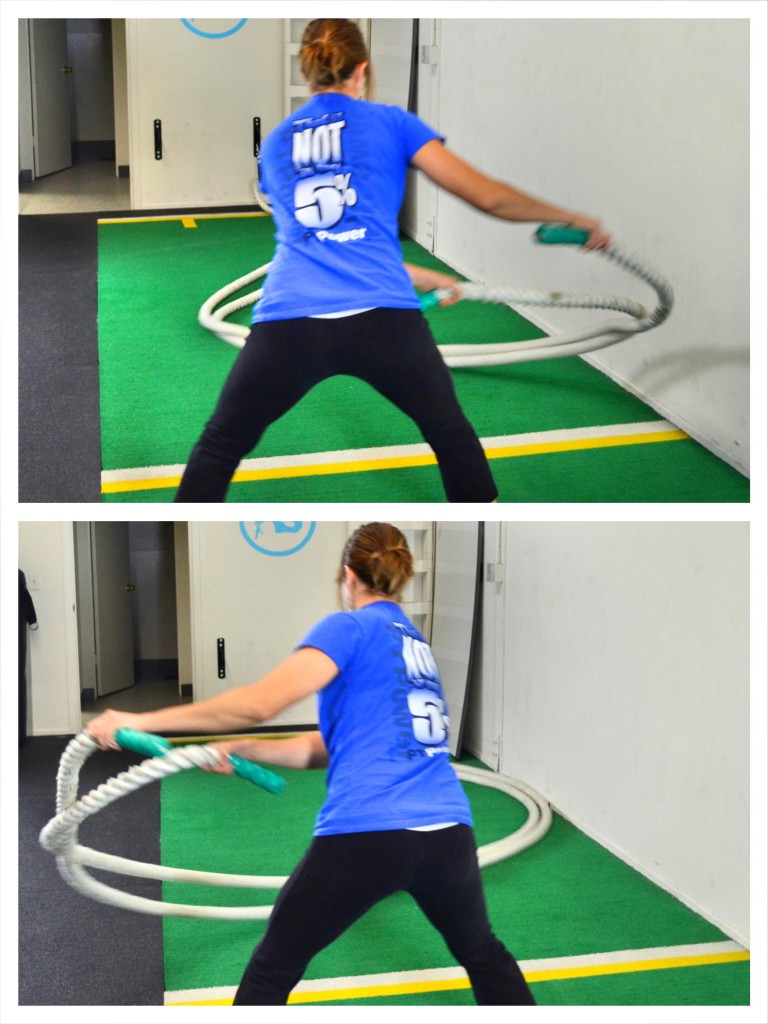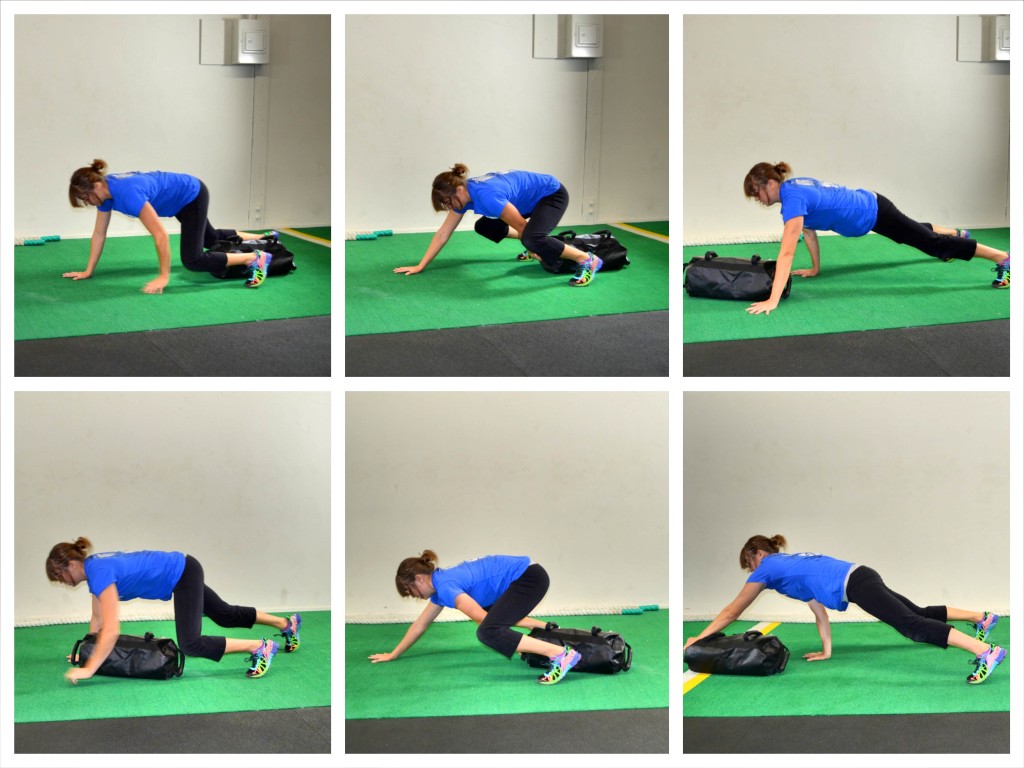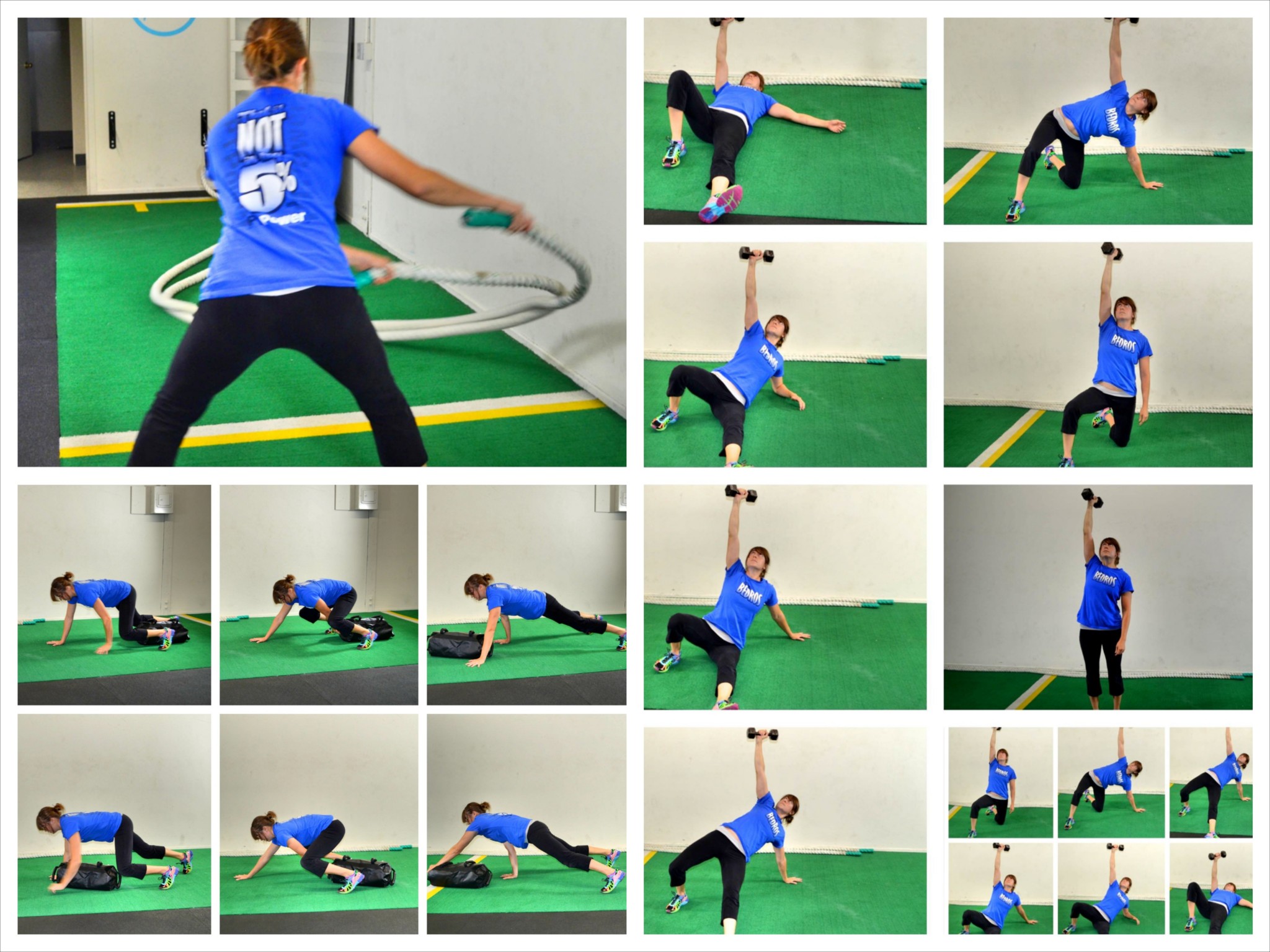Circuits can be done in a variety of ways. They can be done for a prescribed amount of sets or they can be done for an allotted time.
When you do circuits for time and try to get as much work done in that time as possible, you are using a training method known as Density Training.
“Density” is the amount of work you are able to do in a set amount of time.
With Density Training, you are trying to increase the amount of work you can do in a set amount of time to improve your strength and your endurance.
When you perform density sets, you want to get as much work done as possible in the allotted time. This means you want to rest as little as possible and move from exercise to exercise quickly.
BUT you don’t want to just cruise through the exercises. You still want to challenge yourself with hard variations and challenging weights. You just never want to go to failure on any one exercise because you don’t want to have to rest between exercises.
It is also helpful to pick exercises that work your body in different ways and may even focus on different body parts. That way you can keep moving even while working hard with each exercise.
If you do need to rest, try to rest briefly between rounds of the circuit.
It is very important with workouts like this to track the weights, exercise variations and sets and reps that you complete so that you know what to aim to beat next time! Density Training only works if you try to up the amount of work you can do each time even if it is just by one rep or one more pound.
Here is a great Density Training 30-Minute Core Workout to try. Record the number of reps and sets you complete and then try to beat those numbers next time.
A 30-Minute Core Workout
Set a timer for 30 minutes. Complete as many rounds as possible in that time.
CIRCUIT:
3-5 reps per side Turkish Get Up
15-20 reps per side Sidewinders
55ft Forward Crawl with Sandbag Pull Through
Rest only as needed. Record your weights, reps and rounds when the time is up. Then try to beat that next time!
EXERCISE DESCRIPTIONS:
Turkish Get Up – With the Turkish Get Up you can use dumbbells, kettlebells or sandbags. We chose dumbbells for this current progression.

To do the Turkish Get Up with a dumbbell, lie on your back with your legs out straight in front of you and hold the weight in one hand. If you hold the weight in your right hand, stretch that arm straight up toward the ceiling and then bend the right knee and place your foot flat on the ground a few inches from your butt. Your left leg should stay straight and your left arm should be at an angle by your side.
Roll to your left side propping yourself up on your left forearm as you do. As you roll, make sure you drive through the foot of the bent knee and keep your right hand straight up toward that ceiling. That arm should not move but always be directly pointed toward the ceiling. Make sure to keep a nice tall posture throughout the movement.
From your forearm, press up onto your left hand. Then bridge up driving through your hand, right foot and left heel. Lift your hips up high enough that you can swing your left leg back and through. Remember your right arm should stay straight up toward the ceiling.
Swing your left leg through so that you are kneeling on your left knee with your left hand out to the side on the ground. Lift up your left hand, keeping the chest tall. Come to a tall kneeling position.
Then stomp your right foot in and come to standing. The whole time you should keep your chest up and your right hand straight up toward the ceiling.
Then reverse the steps going back down to kneeling. Place your left hand back down on the ground to the side of your left knee.
Do not reach too far back. You do not want to be sitting back on your left heel.
Swing your left leg through to the bridge then lower back down to your butt. Finally lower down to your forearm and then roll onto your back.
As you move through the steps to stand up and lower back down, make sure to take your time and create a strong body position at each step.
Again focus on keeping your right arm up toward the ceiling. If you can’t keep your arm straight up toward the ceiling, do not add more weight or even any weight at all.
Complete all reps on one side before switching.
You can also do this move with a sandbag, in which case your arm won’t be up toward the ceiling but instead holding the bag on your shoulder. However, all steps to complete the get up are the same.
If you can’t move past a step, say for instance, you can’t swing your leg through from the bridge, stop at the bridge and lower back down until you become strong enough to properly complete the movement.
If you want to break down the movement further to improve, check out this workout – Breaking Down the Turkish Get Up.
Sidewinders – Hold a handle of the rope in each hand. Make sure to step in toward the anchor point. You want slack in the rope. The more slack you have, the harder the move will be.

Then with your arms relaxed and hands about shoulder-width apart, rotate your core, pulling your arms to the right. Then rotate to the left and pull your arms and the rope to the left.
Use your core to pull the ropes from side to side. You should use your entire core, even using your glutes to power the movement. You won’t fully pivot your feet but you will rotate all the way from your shoulders down to your ankles.
Pull powerfully and quickly from side to side creating waves as far down as possible until all reps are complete.
Forward Crawl with Sandbag Pull Through – Set up a sandbag behind your feet while you are on your hands and knees. Lift up onto your hands and toes.
Reach one hand back through your legs to grab the sandbag. As you reach back, sit your butt back toward your heels.
Then pull the sandbag up and through overhead, extending your hips to help you power the pull. Once you’ve pulled it through, crawl up past the bag and then reach through with the other hand and pull the sandbag up and through.
Keep crawling and pulling until you’ve covered the 55ft. Use a heavy enough bag that you feel challenged. If it doesn’t force you to use your glutes, the weight is too light.

If you struggle even with a light weight, you can start with the Plank Reach Out and Back.



0 Comments
Trackbacks/Pingbacks